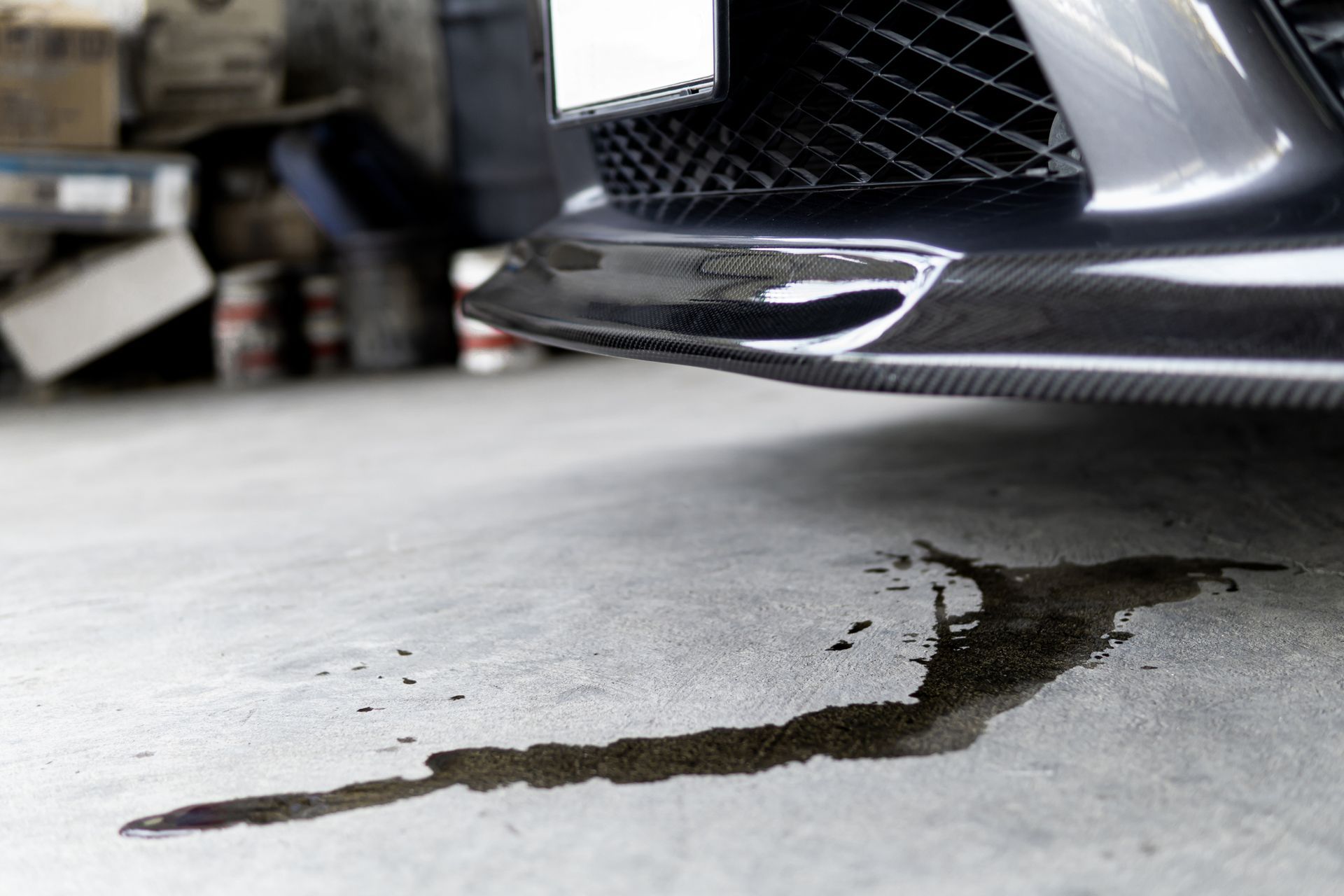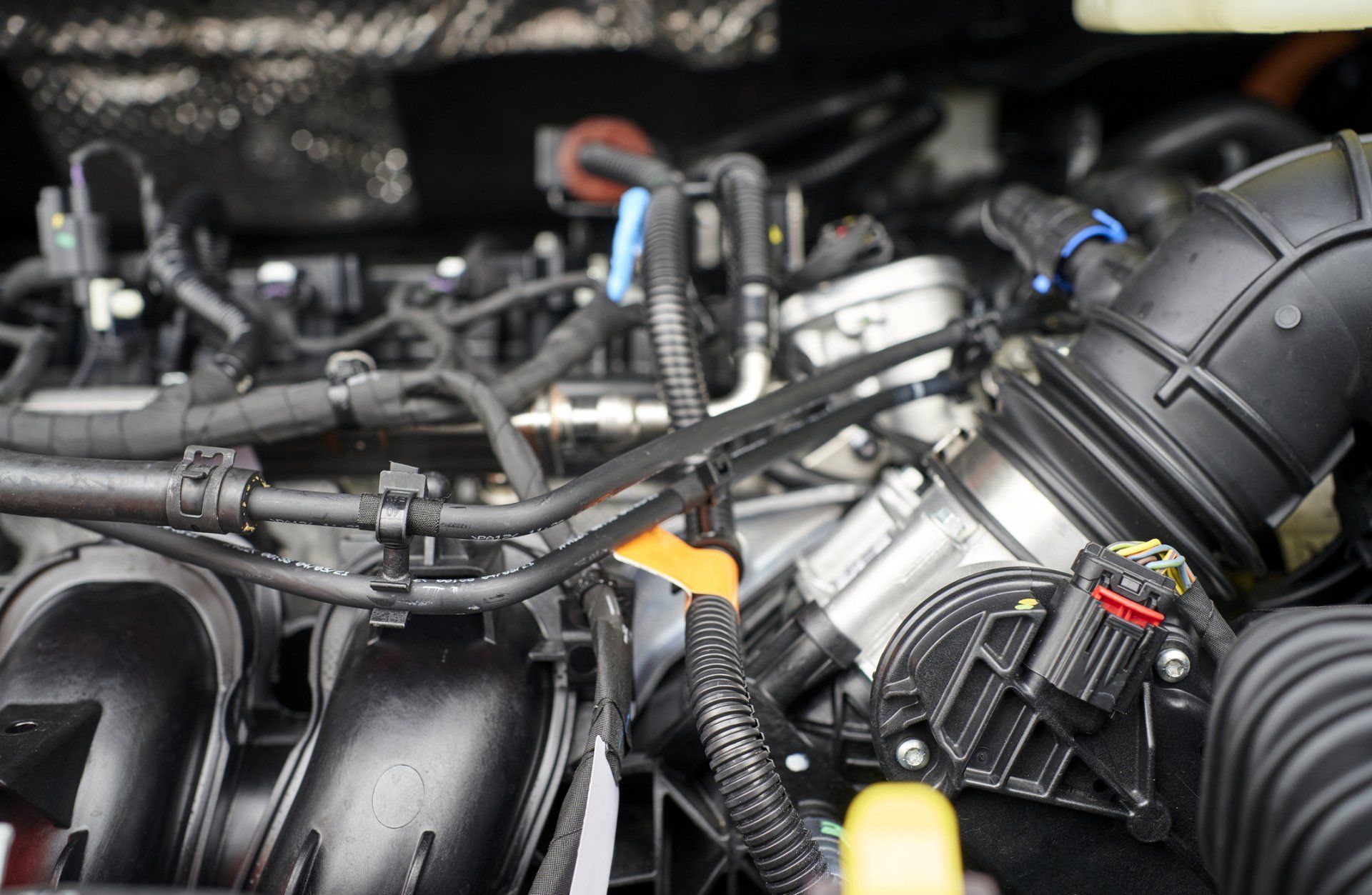What Is That Fluid Leaking Under My Car?

The telltale signs of fluid leaking from an automobile often go undetected at first. It is not until a tiny puddle of liquid is noticed that the vehicle owner learns there is a problem. If you have found evidence of a fluid leak underneath your automobile, you can usually identify the type of fluid and the likely source of the leak.
Most automotive fluid leaks occur gradually, but some fluid losses are more than just a slow leak. A ruptured hose will allow most of the fluid within the hose to quickly escape. In that situation, you are likely to see a substantial amount of escaped fluid in the area near the hose rupture. Because most fluid leaks are gradual, they usually require more effort to track down.
There are various clues that can help identify a leaking fluid. Most automotive fluids have a distinctive color when they are new. If the leaked fluid is on the ground, however, the source of the leak may not always be directly above the escaped liquid. The specific source of the leak must usually be found after first identifying the type of fluid that is escaping.
Engine Coolant
Engine coolant typically has a distinctive green color. There are rubber hoses that transport coolant from the engine to the radiator. There are also hoses at the rear of the engine that carry hot coolant to the heater core within the passenger compartment. If a greenish fluid is found anywhere underneath the engine, the fluid is likely to be coolant.
The coolant hoses are secured to the various engine components by the use of clamps. Look on the hoses for any coolant that might have escaped through a loose clamp. If a loose clamp is not found, check the level of coolant that remains in your car. If there is still an adequate level of coolant, you can probably safely drive the car to have the leak investigated further.
Motor Oil
Motor oil has an amber color when it is new. However, engine oil takes on a darker shade as it picks up contaminants over time. In addition to the blackened color, used motor oil may also have a burned-out smell. The discovery of oil spots underneath your vehicle may indicate that one of the engine gaskets is leaking.
The loss of oil from a gasket leak could potentially damage your engine if the leak is not stopped. An oily sheen on the outer wall of the engine may indicate that a gasket is leaking. There is another gasket at the bottom of the engine that may need a professional inspection. If you suspect that you have lost any oil, check the level of the remaining oil before starting the engine.
Transmission Fluid
Most types of automotive transmission fluid has a reddish color. Transmission fluid normally retains its red color for as long as it remains in use. A transmission leak is relatively uncommon. However, you should check the transmission fluid level if an unidentified fluid is found underneath the vicinity of the transmission.
Power Steering Fluid
Power steering fluid typically has a red color similar to transmission fluid. However, the power steering system is more likely to develop a leak. Most vehicles rely on a power steering pump that is connected to multiple hoses. The power steering components are easily accessible and can be visually inspected if any fluid leaks are found underneath the components.
The color and consistency of a leaked fluid is easier to determine if the leak is caught on a piece of cardboard. If possible, place a stationary sheet of cardboard under your car engine to catch any leaks. The cardboard should provide better information about the type of fluid and the location of the leak. Contact Letcher Bros. Auto Repair for more advice on stopping fluid leaks.








CONTACT INFORMATION
Phone: 510-724-2335
Email: letcherbros@gmail.com
Address: 636 San Pablo Ave. Pinole, CA 94564










BUSINESS HOURS
- Monday
- -
- Tuesday
- -
- Wednesday
- -
- Thursday
- -
- Friday
- -
- Saturday
- Closed
- Sunday
- Closed




